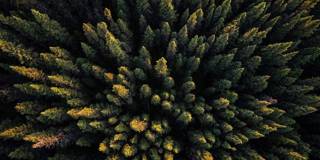Indigenous peoples and local communities are not only the best protectors of biodiversity; they are also the most cost-effective – and among the most in need. Increasing support for indigenous-led conservation efforts must therefore be a top priority for world leaders.
LABRADOR/PALAWAN – In the southwest corner of the Philippines, the forest of the Batak people is a biodiversity hotspot. At least 31 endangered and threatened species – including the pangolin, the world’s most trafficked mammal – can be found only here, in an area the size of Montreal. The forest also played a critical role in shielding people from the 160-mile-per-hour winds of Super Typhoon Odette at the end of 2021. The Batak maintain and monitor the forest for only $20,000 per year – about the price of a low-end Rolex watch.
The Batak are not alone in calling a biodiversity hotspot home. The Innu homelands of Nitassinan, in what is now known as Quebec and Labrador, lie in Canada’s boreal forest – the largest intact forest left on the planet. Home to migratory and woodland caribou, lynx, wolves, and polar bears, and a major flyway for birds, scientists predict that it will become a refuge for even more animals and plants as climate change transforms their habitats. The Innu Nation, longtime stewards of these lands, is attempting to protect them by proposing and establishing Indigenous Protected and Conserved Areas.
An estimated 80% of the planet’s remaining biodiversity can be found on the lands of indigenous peoples and local communities. With as many as one million species of plants and animals at risk of extinction today, the need to empower these groups to protect nature should be obvious. The just-concluded United Nations summit on biodiversity (COP15) in Montreal – several hundred miles south of the Nitassinan – offered an opportunity to do just that.

LABRADOR/PALAWAN – In the southwest corner of the Philippines, the forest of the Batak people is a biodiversity hotspot. At least 31 endangered and threatened species – including the pangolin, the world’s most trafficked mammal – can be found only here, in an area the size of Montreal. The forest also played a critical role in shielding people from the 160-mile-per-hour winds of Super Typhoon Odette at the end of 2021. The Batak maintain and monitor the forest for only $20,000 per year – about the price of a low-end Rolex watch.
The Batak are not alone in calling a biodiversity hotspot home. The Innu homelands of Nitassinan, in what is now known as Quebec and Labrador, lie in Canada’s boreal forest – the largest intact forest left on the planet. Home to migratory and woodland caribou, lynx, wolves, and polar bears, and a major flyway for birds, scientists predict that it will become a refuge for even more animals and plants as climate change transforms their habitats. The Innu Nation, longtime stewards of these lands, is attempting to protect them by proposing and establishing Indigenous Protected and Conserved Areas.
An estimated 80% of the planet’s remaining biodiversity can be found on the lands of indigenous peoples and local communities. With as many as one million species of plants and animals at risk of extinction today, the need to empower these groups to protect nature should be obvious. The just-concluded United Nations summit on biodiversity (COP15) in Montreal – several hundred miles south of the Nitassinan – offered an opportunity to do just that.